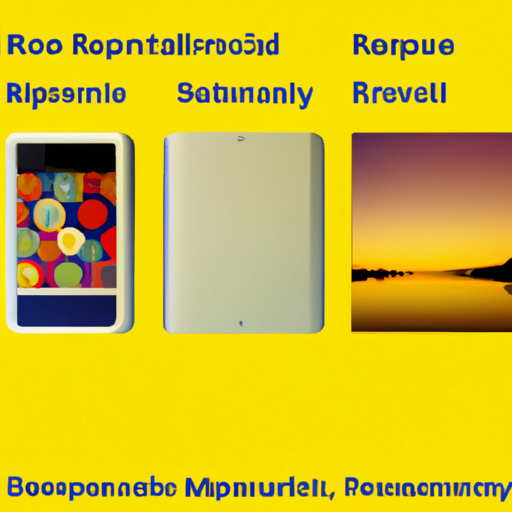
-
Table of Contents
- The Future of Responsive Email Design: Beyond Static Templates
- The Importance of Responsive Email Design
- The Limitations of Static Templates
- The Rise of Dynamic and Interactive Emails
- 1. Personalization
- 2. Interactive Elements
- 3. Real-Time Content
- 4. AMP for Email
- Case Studies and Statistics
- 1. Airbnb
- 2. Burberry
- 3. Litmus
- Conclusion
The Future of Responsive Email Design: Beyond Static Templates

Email marketing has long been a powerful tool for businesses to connect with their audience. However, with the rise of mobile devices and changing consumer behaviors, the traditional approach to email design is no longer sufficient. In today’s fast-paced digital world, responsive email design is becoming increasingly important. This article explores the future of responsive email design, going beyond static templates to create engaging and personalized email experiences.
The Importance of Responsive Email Design
With the majority of emails now being opened on mobile devices, it is crucial for businesses to ensure their emails are optimized for different screen sizes and resolutions. Responsive email design allows emails to adapt and display correctly on any device, providing a seamless user experience. Here are some key reasons why responsive email design is essential:
- Improved User Experience: Responsive emails are easier to read and interact with on mobile devices, leading to higher engagement and conversion rates.
- Increased Reach: By catering to mobile users, businesses can reach a larger audience and maximize the impact of their email campaigns.
- Brand Consistency: Responsive design ensures that your emails maintain a consistent look and feel across different devices, reinforcing your brand identity.
- Adapting to Consumer Behavior: As consumers increasingly rely on mobile devices for their online activities, businesses need to adapt their email marketing strategies to meet these changing behaviors.
The Limitations of Static Templates
Static email templates have been the go-to solution for many businesses, providing a consistent layout and design. However, they have several limitations that hinder their effectiveness in today’s dynamic digital landscape:
- Lack of Flexibility: Static templates are rigid and do not adapt well to different screen sizes, resulting in poor user experiences on mobile devices.
- Generic Content: Static templates often deliver the same content to all recipients, regardless of their preferences or behaviors. This lack of personalization can lead to disengagement and decreased conversion rates.
- Complex Coding: Creating and maintaining static templates can be time-consuming and require advanced coding skills. This can limit the agility and responsiveness of email campaigns.
The Rise of Dynamic and Interactive Emails
To overcome the limitations of static templates, businesses are turning to dynamic and interactive emails. These emails go beyond the traditional one-size-fits-all approach and provide personalized and engaging experiences for recipients. Here are some key trends shaping the future of responsive email design:
1. Personalization
Personalization is a powerful tool in email marketing. By leveraging customer data and segmentation, businesses can deliver tailored content that resonates with individual recipients. Dynamic emails allow for real-time personalization, enabling businesses to display relevant product recommendations, location-based offers, or personalized greetings. According to a study by Experian, personalized emails deliver six times higher transaction rates compared to generic emails.
2. Interactive Elements
Interactive elements, such as carousels, accordions, and image galleries, enhance user engagement and provide a more immersive experience. These elements allow recipients to interact with the email content without leaving their inbox. For example, a clothing retailer can include a carousel of product images that users can swipe through to explore different options. According to Litmus, interactive emails can increase click-through rates by up to 18%.
3. Real-Time Content
Real-time content ensures that emails are always up to date and relevant. For example, a travel company can include live flight prices or hotel availability in their emails, providing recipients with the most accurate information. Real-time content can be achieved through dynamic content blocks that update based on external data sources or APIs. This level of personalization and timeliness can significantly improve the effectiveness of email campaigns.
4. AMP for Email
Accelerated Mobile Pages (AMP) is an open-source framework developed by Google to create fast-loading web pages. AMP for Email extends this technology to emails, allowing for dynamic and interactive experiences directly within the inbox. With AMP for Email, businesses can embed forms, surveys, and even complete checkout processes within their emails. This eliminates the need for recipients to navigate to external websites, streamlining the user journey and increasing conversion rates.
Case Studies and Statistics
Several businesses have already embraced responsive email design and achieved impressive results. Here are a few case studies and statistics that highlight the impact of dynamic and interactive emails:
1. Airbnb
Airbnb implemented dynamic email content to personalize their email campaigns. By including personalized recommendations based on the recipient’s previous searches and bookings, they achieved a 300% increase in click-through rates and a 900% increase in bookings from email campaigns.
2. Burberry
Burberry utilized interactive elements in their email marketing strategy. By including a “click to explore” feature that allowed recipients to browse their latest collection directly within the email, they saw a 50% increase in click-through rates and a 20% increase in conversion rates.
3. Litmus
Litmus, an email testing and analytics platform, conducted a study on the impact of interactive emails. They found that interactive elements, such as image carousels and hamburger menus, increased click-through rates by 18% and conversion rates by 10%.
Conclusion
The future of responsive email design lies in going beyond static templates and embracing dynamic and interactive experiences. By personalizing content, incorporating interactive elements, leveraging real-time data, and adopting technologies like AMP for Email, businesses can create engaging and personalized email campaigns that drive higher engagement and conversion rates. As consumer behaviors continue to evolve, it is crucial for businesses to adapt their email marketing strategies to meet these changing expectations. Responsive email design is no longer an option but a necessity for businesses looking to stay ahead in the digital landscape.
